Most people probably don’t know the name Teressa Bellissimo, but no doubt, they are familiar with the culinary phenomenon she created nearly 50 years ago: Buffalo chicken wings.
And after these many years and myriad variations, chicken wings of all types and flavors are a staple of pub fare and parties alike. Grilled chicken wings make a fabulous appetizer for a July 4 cookout.
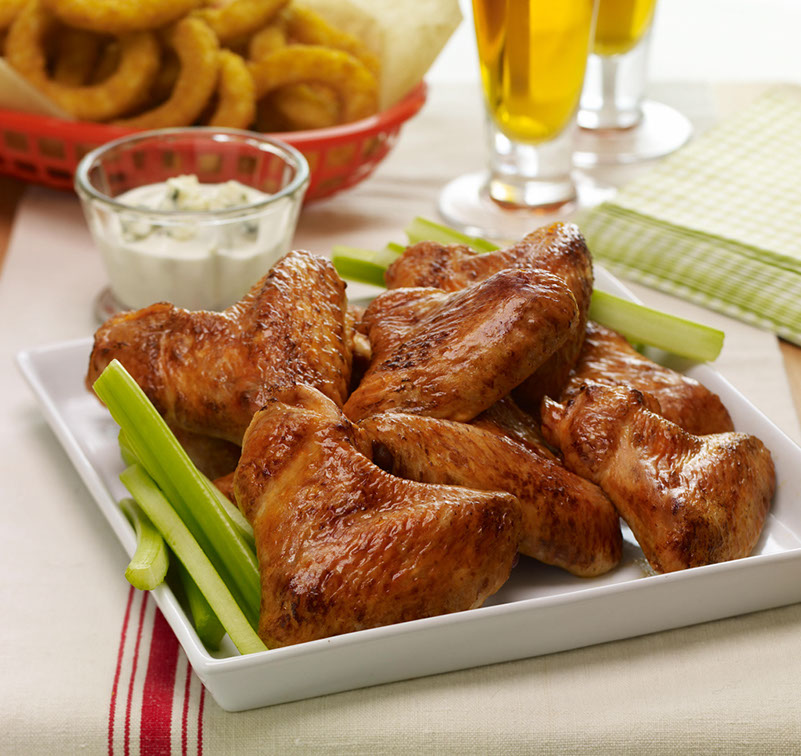
Legend and lore have it that Mrs. Bellissimo had extra chicken wings on hand at the Anchor Bar—a Buffalo, NY, restaurant that she owned with her husband, Frank—when her son, Dominic, and some hungry friends showed up late on a Friday night.
So, into the deep fryer went the chicken wings. When they were finished cooking, Mrs. Bellissimo tossed them in a sauce made of butter and a vinegar-based cayenne pepper sauce—Buffalo Sauce. And to cool the heat of the sauce, she served the wings with celery stalks and blue cheese dressing.
It was a pivotal event in culinary history.
A Poultry Success Story
50 years ago, chicken wings were low on the pecking order of preferred chicken parts. They were either a waste product or used to make stock and sauces. They were so cheap they were practically given away.
Today, chicken wings are a billion-dollar food phenomenon that rival the hamburger as one of our favorite all-American foods.
However, the fact of the matter is that most people don’t have a deep fryer in their kitchen arsenal. So grilling chicken wings has become a popular way to cook them and brings with it an entirely different flavor and textural profile, as well as offering a lower-fat alternative to deep frying.
Preparing Wings for the Grill
Season
The simplest and fastest method for preparing wings for the grill is to simply season them with extra virgin olive oil, sea or kosher salt, and fresh ground pepper and maybe some granulated garlic or Lobel’s All-Purpose Savory Seasoning.
With this preparation, the seasonings should be added just before you are about to put them on the grill. You don’t want to let the chicken wings stand for very long with salt on them, as it will leach moisture from the wings.
Marinate
You can also marinate the wings for 2-3 hours or overnight. Lobel’s New York Marinade is ideal. In order to ensure a crisp texture, remove the wings from the marinade, pat them dry with paper towels, lay them out in a single layer on a cookie sheet, and put them uncovered in the refrigerator for a few hours. This allows the surface of the wings to dry. Wings that are still wet will not get crisp; instead, they will steam on the grill, which leaves the skin soft and flabby.
On the Grill
Setup your grill for indirect cooking. If you are using a charcoal grill, mound all of the coals to one side of the grill kettle. If you are using a gas grill, set half the burners to high and the other half to medium-high. You are looking to maintain a running temperature of 350–400°F.
Sear
Some prefer to sear the wings over high heat before moving them to the warm zone to bring them up to a final temperature of 165°F. Brush them with sauce about 10-15 minutes before taking them off the heat.
Reverse Sear
On the other hand you can cook the wings on the indirect-heat side of the grill. Grill about 20-25 minutes, then take them off the heat, brush them with your favorite sauce, and move them to the direct-heat side and let them crisp for 1-2 minutes, allowing the sauce to caramelize. Turn frequently. This is especially important for any sauce that has sugar in it. Putting the sauce on too soon or leaving the wings too long over direct heat will cause the sugars to burn and turn bitter.
Total cooking time with either method should be about 25-30 minutes.
Handling Chicken Wings on the Grill
Grilling a large number of wings can be a fairly labor-intensive endeavor with all the required turning, lifting, etc. To cut down on the labor, leave the chicken wings whole (3 sections), or in 2-sections (wing tip removed).
However, there are a couple of tools and techniques that can make the process more easily managed.
Grill Basket
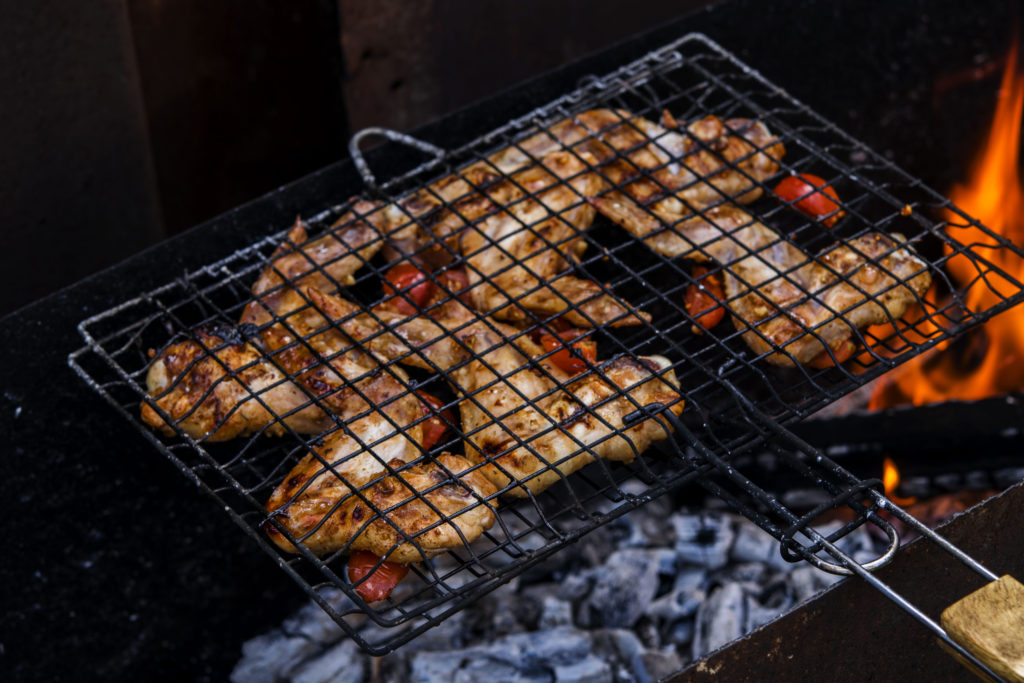
These long-handled baskets are great not only for wings, they are perfect for hot dogs, burgers, shrimp, scallops—just about anything that you don’t want falling through the cooking grid or rolling off altogether.
The wings are laid out in a single layer and secured with a pressure ring in the handle. And, that is the only drawback: The number of wings you can grill at one time is limited to the size of the grill basket, so you may have to cook in batches.
Skewers
You can also grill the wings kabob-style by lacing them on to skewers—metal preferred.
Sauces and Seasonings
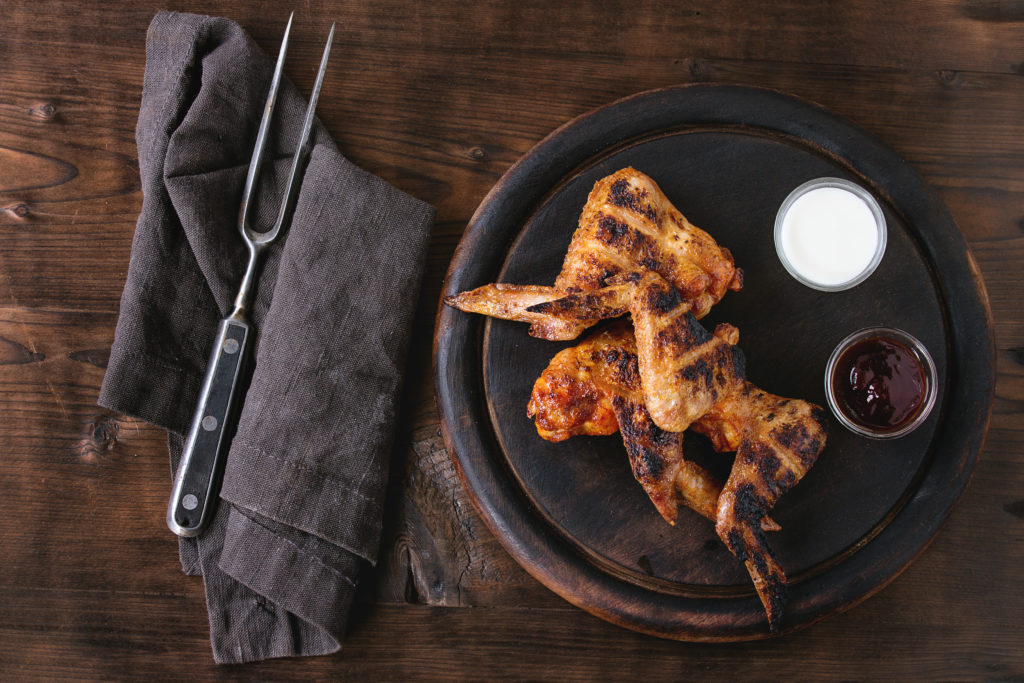
Whether you choose original Buffalo wings or one of the myriad flavors and concoctions that abound today, wings are so versatile they can take on just about any flavor profile you can imagine from homey to elegant to exotic.
If you like a stripped-down dry version, use seasoning blends, such as:
The original Anchor Bar wing sauce is a simple combination of butter and Frank’s Hot Sauce in a ratio ranging from 1:1 to 2:1. Additional cayenne powder, granulated garlic, and/or apple cider vinegar can all be added to customize your wing experience.
A melted compound butter is another option. Gorgonzola-scallion compound butter is a tasty alternative.
From savory to sweet, here’s a delicious glaze that is fabulous any time of year: Cranberry-Balsamic Glaze.
For an Asian influence, a basic Chow Sauce can be used as a marinade and as a finishing or dipping sauce.
Have you ever grilled chicken wings? What is your favor preparation? Do you prefer dry wings or wet/sauced wings?
Save


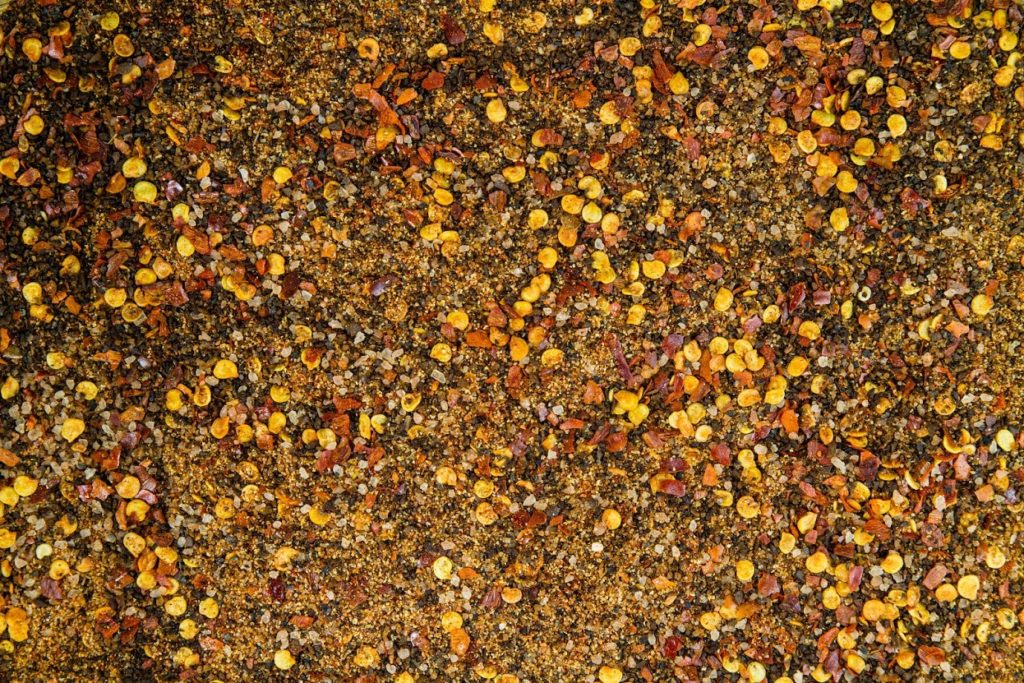
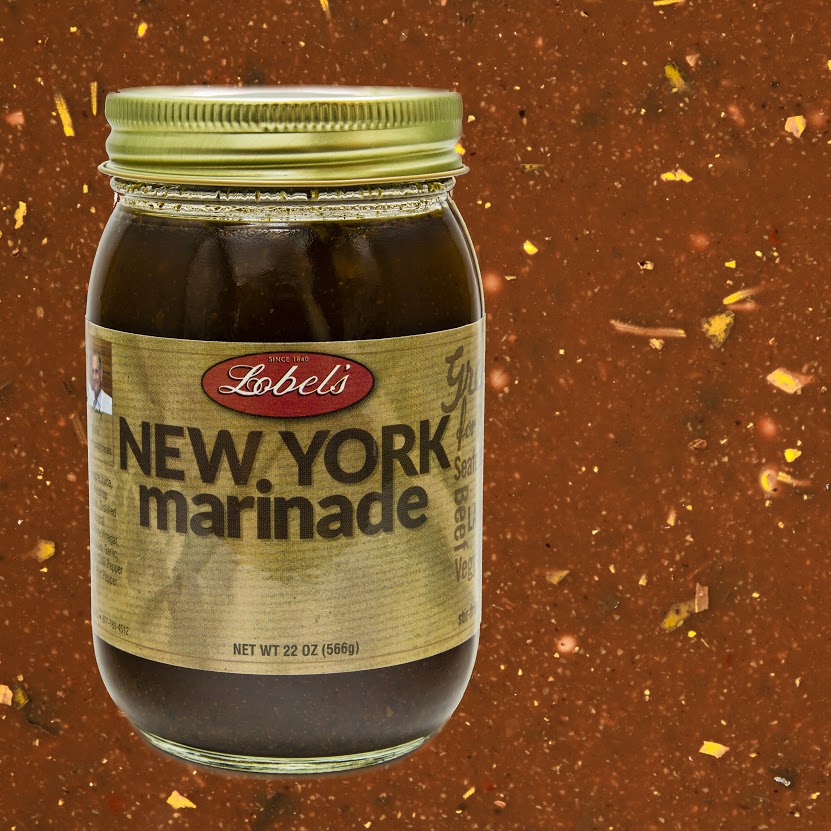

Leave Your Response